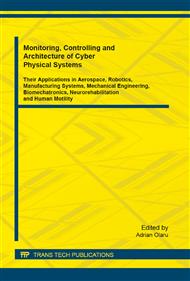p.17
p.23
p.30
p.37
p.43
p.53
p.64
p.72
p.81
An Experimental Method for Erosion Evaluation for a Roller Coaster’s Carriage
Abstract:
This paper presents the erosion behavior of the metallic structure of the roller coaster’s carriage using an experimental method for erosion evaluation which permits a comparison with several theoretical models. The roller coaster’s carriage body is a rigid metallic structure and most of the times, for an appealing design, the surface of the carriage is coated with a composite material which uses a non-metallic matrix. It is expected that the experimental study to be extrapolated to another mechanical system which is moving outside.
Info:
Periodical:
Pages:
43-49
Citation:
Online since:
October 2014
Keywords:
Price:
Сopyright:
© 2014 Trans Tech Publications Ltd. All Rights Reserved
Share:
Citation:


